The life of the astronaut is not easy!
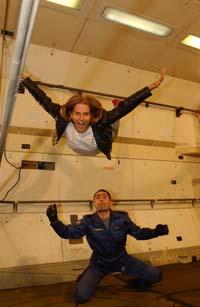
Have you ever wondered how they go to the bathroom, what they eat, or how they are cleaned? It is not a rare occurrence, many have the same curiosity. And it is that also the simplest things we do every day, up there, inside the spacecraft, have to be different. And so it is.
For example, going to the bathroom is not as easy as on Earth, much less. In the soil, both solid and liquid residues go to the ground thanks to the force of gravity. With the water you take it away and ready, all clean. In spatial microgravity, however, the residues float like the rest of things. To solve this problem, engineers have made a series of attempts that, despite being in progress, have not yet been overcome.
Yes, they have made a lot of progress. In fact, the initial version was not very sophisticated, in fact, at first nothing had been planned. The first U.S. spacecraft carrying the man inside was released into orbit in 1961, but should not make a full orbit, but a short flight of a quarter of an hour. That's why nobody thought about putting a bathroom. In a fifteen minute mission it was not considered necessary. However, the release was delayed a lot.
Consequently, the astronaut Shepard spent hours and hours inside the ship, without moving from his place, ready to launch into space and surrounded by television cameras. He could not leave the container to cover his physiological needs, so he had no choice but to urinate there. But he did not realize it. In fact, the control ones were analyzing the activity of the astronaut's heart and for this purpose several electrodes were placed on the chest.
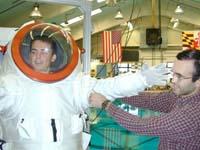
By extending the urine inside the astronaut costume, they moistened the electrodes. And since the urine is rich in electrolytes that drive electricity, it seemed that the heart went crazy, since the measurements were completely mixed. However, the mission advanced. A few minutes later, the first astronaut came out into space as it was. Wet. Less bad than for the following occasion they invented a solution: they made him put a large diaper on the astronaut.
From diaper to the real bathroom
That first diaper was very basic, but it evolved and became a bag that was stuck in the buttock. Once the stools were made, the bags could be clean, since the stools were wrapped in them. However, it had to be very careful not to escape before closing. This happened sometime, and television stations had to turn them off so as not to offend the American public.
Now, in their spacecraft, they have toilets similar to those we have on Earth. In space the water is equivalent to gold, so they take advantage of the air to carry the feces, specially prepared to be used in microgravity. The example is the NASA Waste Collection System, that is, the WCS waste collection system.
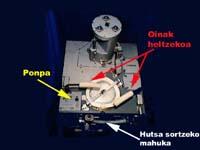
The WSC is not limited to waste collection, but also treats them. Designed for both men and women, it is located in a room 75 centimeters wide, in the crew cabin. To sit in the bathroom has a bar to surround the thighs. In addition, the astronaut sticks to the bathroom with four velcro and the feet are also tied.
The bathroom is funnel-shaped and is attached to a flexible hose. It can be used sitting or standing. The urine is dragged inside by an air current and the mixture enters a rotating chamber. The centrifugal force separates both and the urine passes to the wastewater reservoir.
The seat, in addition, is a bit soft and adapts to the body of the person who sits. In this way it is hermetically closed to the outside. It has a hole of about ten centimeters for solid waste. Just start to use it, air comes out through holes located under the seat. It emits 850 liters of air per minute, which makes the feces go to a stratified and porous bag. Despite the extraction of air from the pores, fluids, and bacteria are trapped inside the pouch. Therefore, it is totally hygienic.
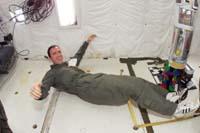
Once the astronaut has finished the toilet work, they open a valve to deposit the waste in the space vacuum. Immediately the solid waste is frozen, dehydrated and deodorized. Later they are stored for analysis on Earth.
On the contrary, the liquids collected in the residual water reservoir are periodically removed. An astronaut pointed out that the image that occurs when emptying liquids at sunset is really beautiful. In any case, the show will be a deserved prize, once taken these works...
MELISSA project for long trips
Although astronauts have similar toilets to those we now have on Earth, ESA wants to take a step further and turn waste into water, oxygen and food. To do this, he created the Melissa project. The project is attended by numerous European research centres, as well as Canadian space agencies.
It began in 1989 and its goal is to address the supply problems that arise in long trips. Imagine how much water, food, and oxygen the six astronauts would need to go to Mars, for example. It must be taken into account that the displacement to the red planet takes at least three years. Thus, it has been calculated that the spacecraft should only carry 33 tons of material. That makes the trip impossible. Therefore, to start organizing this type of travel it is essential to find a solution to the problem and the best is to create useful elements from the waste.
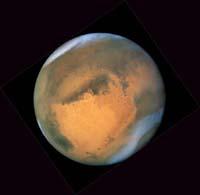
The Melissa project began in 1989 and has already made quite progress. The system is a miniature ecosystem that transforms waste and carbon dioxide into edible biomass through the energy of light. In other words, he realizes photosynthesis. The system consists of five parts or compartments. In three of them there are different types of bacteria that degrade waste, in other photosynthetic and vegetable bacteria, and in the last, of course, the crew goes.
The first section is very important. There are liquefied the remains of the crew and become volatile fatty acids, ammonia and minerals. The carbon dioxide generated is taken to the compartment of the plants. In the second part, the inorganic carbon becomes organic carbon and, in the third part, the ammonia of the first part becomes nitrate. Because plants also need nitrate, it is taken to the fourth compartment.
In this fourth section, we use, therefore, compounds generated in the previous ones for the cultivation of plants. Somehow, it is a kind of orchard. In addition, plants and photosynthetic bacteria produce oxygen and water.
After fifteen years of research, they have shown that more than 70% of waste is recyclable and reusable. Some pilot installations have already been made and are ready to be tested in space. Subsequently, depending on the results, you must adjust, refine or modify, but basically this will be the future system.
It should be noted that some of the advances generated for this system have application in other areas. For example, the Freixenet wine house uses sensors designed for the system. The Concordia de la Antártida research base has installed a system based on the first compartment for the recycling of wastewater.
Space menu Space menu
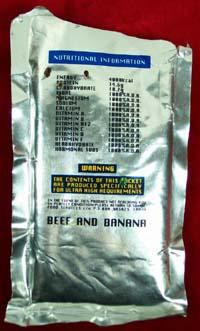
Eating is as essential, everyday and basic as going to the bathroom. The food of astronauts is prepared to occupy the smallest possible space, to weigh little and last. Some foods do not require treatment and can be carried on board such as cereal bars and nuts. Others are macaroni, cheese and eggs. Astronauts should drink water before eating. Fruits, yoghurts, and some meats are treated with heat to kill bacteria and even dehydrated in part. Other meats are irradiated.
In one way or another, they have managed to have astronauts eat a menu similar to the one eaten on Earth. In fact, at first they ate a kind of papilla embedded in the tubes, which apparently did not satisfy the astronauts.
However, they still cannot carry any food. Foods that leave the breasts are especially dangerous, as they float, can be introduced into the machine and damage the system. And astronauts can get sick by inhalation.
Without shower
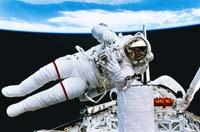
They say that the MIR space station had its own smell, a wardrobe full of socks. And it is not surprising, because cleaning in space is not a thing of jokes.
Astronauts currently use special products to be cleaned. The key is not to spend water. That is why shampoos were used that were formed in the hospitals, since once used it is not necessary to rinse to remove soap. Also very useful are wet rags used to clean the rear to children. However, they must be careful with the components. They cannot contain alcohol or propylene glycol because of their recycling problems. Consequently, shampoos contain components of vegetable origin.
To wash clothes they must use as little water as possible, but at least they have no drying problems, since air is usually dry inside the container. Garments that prevent the proliferation of bacteria are now being designed. The fabric has silver threads, since the metal prevents the growth of bacteria. It seems to give good results, and now sheets, towels, etc. They begin to be made with that fabric.
Published in section D2 of Deia.
Buletina
Bidali zure helbide elektronikoa eta jaso asteroko buletina zure sarrera-ontzian











